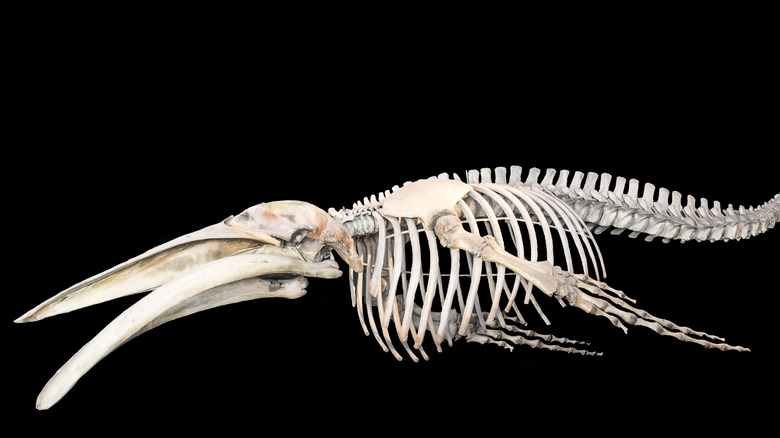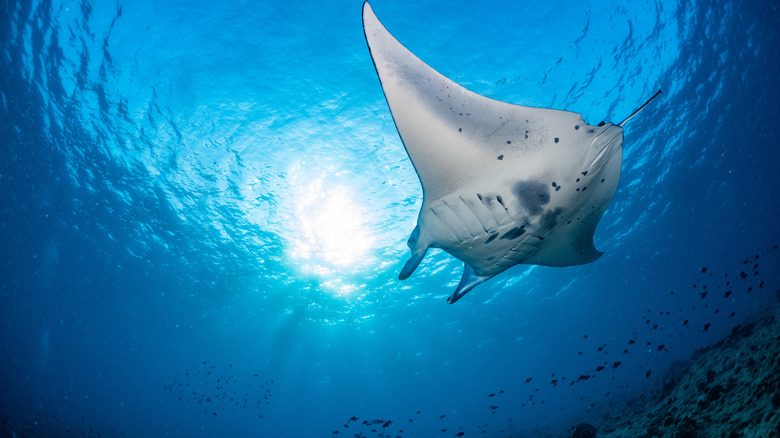The Unexpected Feature One Shark Boasted 93 Million Years Ago
Shark fossils are some of the world's most fascinating finds. When you consider the fact that sharks have been around longer than dinosaurs (via Nature), seeing their changes through ancient skeletal matter sheds light on all ocean life — even those creatures dwelling in the darkest depths of the sea. Due to the fact that shark history dates back approximately 400 million years, these ocean animals are sometimes referred to as "living fossils" (via Florida Museum).
While most of what we've collected of the skeletal remains of prehistoric sharks is of the toothy variety, every now and then, an underwater excavation brings us more preserved pieces of the ancient puzzle. Such is the case for the recently discovered ancient eagle shark (via Smithsonian Magazine). Now extinct, this shark's fossil, which was discovered in northeastern Mexico, bore a most unusual feature indeed. While one might have expected teeth, paleontologists found not a single one of those. Instead, it appears that this 93-million-year-old shark had... wings!
The eagle shark had wings like today's manta ray
Everything about this recently unearthed fossil is unique. From the fact that the limestone it was capsulized in preserved everything except its teeth to the revelation that this shark had wings. According to Smithsonian Magazine, the eagle shark, who swam the seas in the Cretaceous Period, was capable of "underwater flight." This unique capability is attributed to the sea creature's unusual shape.
The eagle shark is the first shark on historical record that is believed to have been wider than it was tall (via Live Science). Paleontologists claim its features bear a striking resemblance to the modern-day manta ray. As such, this shark was likely a filter feeder, dwelling in the section of the sea that is now reserved for manta rays and other bottom-feeding fish.
This discovery challenges everything we thought we knew about ancient sharks, shaping quite an altered picture of their past. BBC reports that there were about 3,000 shark species swimming around in ancient oceans. This estimated number comes courtesy of our abundant collection of fossilized teeth. Now, we must consider the possibility that these ancient shark's bodies looked entirely different from the sharks we see today.

